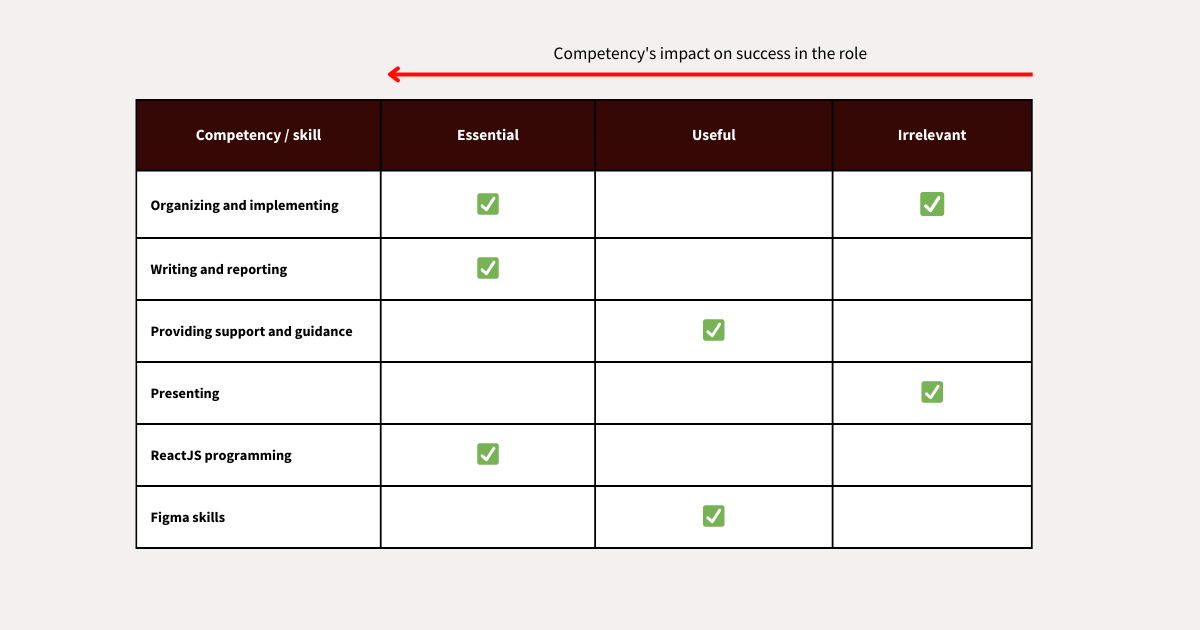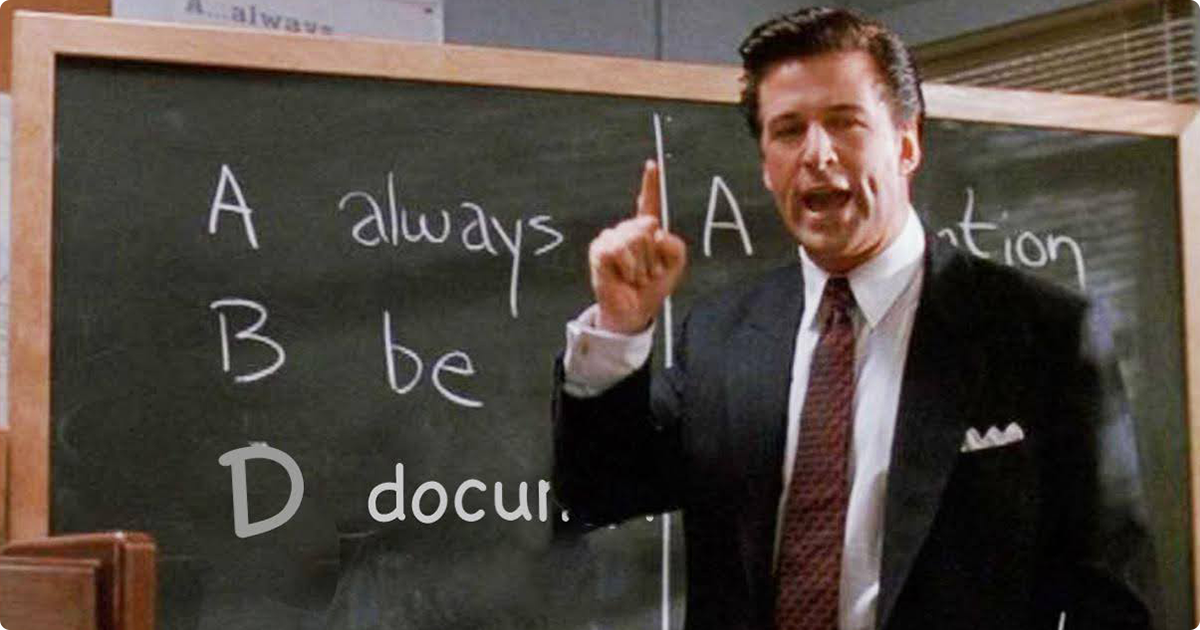Janne Malmisaari
Marketing Manager
In addition to his marketing expertise, Janne has 5 years of experience from talent acquisition for multiple industries.

Talent Acquisition
Implementing skills-based recruitment demonstrates a company's growing recruitment maturity. But it isn’t something you can implement overnight, as the process requires a major re-evaluation and overhaul of the entire recruitment process.
While organizations have already adopted skills-based hiring practices, the numbers change from survey to survey. In a poll held at one of our webinars in Finland, 54% of the surveyed companies hadn’t yet implemented competency-based recruitment.
How to get started with skills-based hiring? If you are considering implementing skills-based hiring to elevate your talent acquisition, this is the guide for you!
By the end of this checklist, you will have learned about:
If you haven’t yet, we recommend that you first read our Crash Course on Skills-Based Hiring to get up-to-date on related terminology and the benefits of skills-based recruitment.
While it might sound tedious, laying the groundwork is essential in implementing skills-based hiring practices. Defining the different job roles in your organization is the first step in adopting a skills-based approach to talent acquisition.
As each recruitment process begins with building a candidate profile, you should have templates for each existing role within your organization. Conducting a job analysis for the positions in your company is the starting point. When doing a job analysis for skills-based recruitment, you need to answer the following questions:
The next step is to score and categorize each skill and competency based on their impact and importance for the role. This also helps you define which competencies are truly relevant for the role: we all would like to have a team full of unicorns, but the last time we checked, those don’t come around too often!
Proper scoring and categorizing of skills come in handy later in the process, when conducting application screening and evaluations.

A simple example of a competency selection form.
Although job role templates help you unify hiring processes and save valuable time, each recruitment is different. On a single-recruitment basis, you should evaluate if the team you are hiring for is currently lacking any valuable skills that could be beneficial for the team’s overall success. These skills can work as stand-out skills when comparing otherwise equally qualified candidates.
Useful tools: Job analysis templates, Competency selection forms, ESCO Skills Pillar
It is easy to fall into the trap of thinking that skills-based hiring focuses solely on the evaluation stage. If you want your process to be truly skills-based, you need to incorporate skills-based practices in each step of the recruitment process. And it starts with job ads.
To attract the right profile of candidates, craft informative job postings that clearly highlight the required skills and competencies. Before writing, consider your goals for the applicant pool – are you aiming for a broad reach or a more targeted selection? Keep in mind that generic, jargony job descriptions can be difficult for candidates to interpret and often fail to resonate with the talent you seek. Instead, clearly communicate and categorize the most essential skills, indicating their level of criticality.
Finally, carefully consider your requirements for years of experience and education. Is a specific number truly a reliable indicator of the necessary skills? Consider whether imposing rigid experience or education levels could inadvertently exclude capable candidates.
To make the process more efficient, you can use GenAI tools, such as ChatGPT, Gemini, or Claude, to generate entire skills-based job descriptions or spar with them for better results.
A well-designed application form can also be a great asset in skills-based recruitment. You can add skills-based questions to better gauge the applicant’s skill set from the get-go. This way, initial screening isn’t as dependent on resumes, allowing a more equal and in-depth evaluation.
Food for thought: Perhaps you could even move towards CV-less applications altogether!
Useful tools: Generative AI, Customizable application forms, historical recruitment data.
While it might seem axiomatic that screening and assessing candidates are inherently based on skills and competencies, there are numerous factors to consider.
One of the first problems you might run into is that all applications aren’t created equal. If you followed point #2 and managed to craft a skills-based job description, applicants should have been able to highlight whether they possess the essential and “nice-to-have” skills you are looking for. However, the most skilled candidate might not be the most adept at the job application process.
A great way to gain more material for initial screening is utilizing video: one-way video interviews and video application questions allow candidates to showcase their personality and back up their resume. Just make sure the questions are structured and focus on the competencies of the role.
Another way to supplement skills-based hiring by eliminating potential biases is using anonymous recruitment, or “blind hiring”, in the first stages of the recruitment process.
Depending on the role, creating homework assignments can be an effective way to assess a candidate. Assigning a task related to the role gives you a concrete look into the candidate’s abilities and ways of working. However, be mindful of the workload: using heavy assignments might come off as using job seekers to do actual work for free.
For some roles, even job simulations might be available.
Personality assessments and skills tests are traditionally saved for the later stages to find separation among top candidates, but it is a powerful tool to use earlier in the process. By using assessments earlier on in the funnel, you can utilize the deep insights gained from them during the interview process. Remember to be mindful of how much workload you are imposing on applicants in the initial phases.
To ensure a unified skills-based evaluation process, you need to create structured evaluation templates. Create them based on the job analysis and score how well the candidate matches your criteria. To take things even further, you can set different evaluation criteria for different steps of the recruitment process: after all, you do evaluate candidates differently in the initial screening versus face-to-face interviews.
Useful tools: Evaluation templates, video questions and interviews, personality assessments and skills tests, job simulations.

A skills-focused interview process relies on consistency and fairness. This is where a structured interview framework comes into play. Create interview structures that focus on the competencies related to the role and ensure every candidate you interview for the same role is asked the exact same set of questions. This standardizes the evaluation process and allows for more direct comparisons of their responses.
To truly understand how candidates have applied their skills in real-world scenarios, make effective use of behavioral interview questions. These questions prompt candidates to share specific examples from their past experiences. For instance, you might ask:
“Walk me through a time you had to solve a complex problem under a tight deadline. What steps did you take, and what was the outcome?“.
With modern tools, coming up with insightful interview questions is easier than ever. There are already custom, specialized AI agents for this task.
Old habits die hard – and it is particularly easy to revert to gut feeling during the interview process. Instead, implement a systematic approach to scoring candidate responses using your previously defined assessment matrix. With an evaluation template and clear scoring criteria, you ensure a more objective and skills-based comparison across all applicants.
Reference checks can also play a major part in the success of implementing skills-based hiring. Firstly, you need to align evaluation with the core competencies you defined at the outset. To gain the most insightful feedback, specifically request references from individuals who have directly observed the candidate in practical work scenarios. Structure your reference checks to systematically assess the candidate’s competencies, skills, and behaviors, ensuring an objective evaluation that focuses on concrete examples rather than inferred qualities.
Our friends at Refapp have created an amazing platform for digital reference checking that aligns with the needs of skills-based recruitment.
Useful tools: Interview structures, Evaluation templates, GenAI.
“Always be closing” is a legendary punchline in sales, popularized by the 1992 movie Glengarry Glen Ross. In a recruitment context, this could be modified to “always be documenting”.
By documenting your evaluations and the applicant’s interview responses, you can enable more efficient teamwork with hiring managers and other stakeholders. Documenting your evaluations in real-time helps you gain a better understanding of a candidate’s job position fit. When you combine skills-based evaluation scores with written feedback, you can also provide personalized feedback for rejected candidates.
Ensure your documentation adheres to GDPR guidelines and can be shared with the candidate upon request. If you have done the evaluation based on competencies and qualifications, you should be clear.
Exercise caution when using Generative AI solutions for documentation; never input personal information, including notes about candidates, into third-party providers like ChatGPT.
Useful tools: Recruitment software, AI notetakers, GenAI

With the increased focus on unified, equal, and high-quality hiring practices at each step of the recruitment process, skills-based hiring requires both effort and time.
Having the right tools is integral to your success. An AI-powered application tracking system (ATS), such as TalentAdore Hire, utilizes AI Skills Matching to help identify the defined, must-have competencies quickly. This results in a faster overview of which candidates are most likely a fit for the position. You can match skills based on numerous frameworks, such as ESCO, as well as your own criteria.
Automations and knock-out-questions can be used to presort candidates based on whether their application meets the minimum criteria. This saves valuable time and helps you give the candidates who aren’t a fit their outcome sooner.
Customizable evaluations help you commit to a structured skills-based screening process. You can create a multi-step approach, where each step in the recruitment flow has different evaluation criteria. Our AI Assistant transforms evaluations into professional, personalized feedback for rejected candidates.
Skills-based hiring requires a ton of documentation, and it matters how and where you store the data. With a modern ATS, you can create evaluation templates and interview notepads to document and store your evaluations and assessments in a GDPR-friendly environment. A modern ATS takes care of information security concerns on your behalf. TalentAdore Hire is an ISO 27001-certified solution, ensuring your data is in safe hands.

If you would like to see how TalentAdore Hire supports skills-based hiring, take this interactive product tour.
We hope this checklist has helped you gain confidence and valuable insights to start your journey towards skills-based recruitment!
Blog
Focus on Interview, Not Scribbling Notes: Meet TalentAdore's AI Notetaker
Blog
Top 10 Recruitment Trends for 2026
Blog
Skills-Based Hiring: Crash Course on Definition, Benefits, and Significance
Blog
Human-Centered Recruitment – A Meaningful Experience for Both Candidates and Recruiters